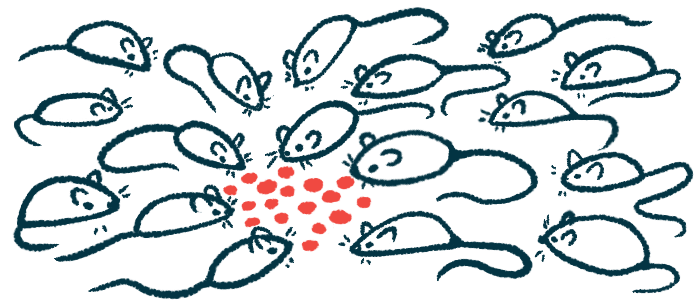Brain volume loss evident before symptoms in Rett mouse models
MRI imaging captures changes over time in male and female animals

Mice in Rett syndrome models showed a loss of brain volume before disease symptoms were evident, with brain shrinkage worsening over time, an MRI study showed.
Delays in brain growth were observed in these mice, and brain growth stopped and appeared to reverse in older female Rett mice.
Because many of these changes occurred before symptom onset and mirrored features seen in Rett patients, MRI measures of brain volume may be a useful preclinical marker for monitoring disease progression and treatment efficacy, the researchers suggested.
The study, “A comprehensive longitudinal study of magnetic resonance imaging identifies novel features of the Mecp2 deficient mouse brain,” was published in the journal Neurobiology of Disease.
Brain shrinkage most notable change in mice of both sexes
The MECP2 protein regulates the activity of other genes by modifying the structure of chromatin, the DNA-protein bundles that form chromosomes. While MECP2 is present in most cells, it plays an essential role in brain development and function.
Almost all cases of Rett syndrome are caused by mutations in the MECP2 gene, leading to a defective or absent MECP2 protein and the onset of disease symptoms.
Because the MECP2 gene is located on the X chromosome, and males have one X chromosome, they usually do not survive infancy with MECP2 defects. As a result, most Rett patients are female; females have two X chromosomes, with one including a properly working copy of MECP2.
Preclinical Rett studies have benefited from mouse models of Mecp2, presenting a broad spectrum of symptoms mimicking those of Rett patients.
Male mice lacking Mecp2 — the mouse version of MECP2 — and referred to as a Rett knockout (KO) model, like male patients, show earlier and more severe disease compared with female Rett mice missing one Mecp2 copy.
Rapid progression is seen in male KO mice after 30 days of age, with death at about 11 weeks old. Similar, but milder, features appear in female Rett mice at 4 months of age, and they live for more than a year — in line with Rett patients who have an average life expectancy of 55 years.
To further understand the impact of MECP2 deficiency and identify valuable biomarkers, researchers in Italy used MRI imaging to characterize changes in the brains of male and female Rett mice over time.
The most notable change seen across both sexes was a reduction in brain size, or brain atrophy, compared with unaffected mice.
In presymptomatic Rett male mice at 20 days old, there was a nonsignificant trend toward lesser brain volume, which became significant at a mildly symptomatic age (30 days), then worsened when full symptoms were evident at 40 days old. Female Rett mice already had significantly smaller brain volumes at presymptomatic stages (60 days old), which worsened over time through mild (90 days old) to severe stages (200 days, or between 28 and 29 weeks, old).
Compared with unaffected mice, which showed constant brain growth over time, Rett female mice show no growth, indicating a growth stoppage or stagnation.
“Reduction of brain volume is progressive and can anticipate the onset of overt symptoms,” the scientists wrote.
Progressive brain atrophy possible in female model mice
Although overall brain volume in presymptomatic male Rett mice did not significantly differ from unaffected mice, several regions already showed defects. Almost all analyzed structures revealed a significant volume loss by the early symptomatic stage. In the late stages — beginning at 40 days old — all major brain regions were about 10% smaller.
Older Rett female mice also showed a progressive reduction of most analyzed brain structures. In contrast with male KO mice, however, the cerebellum of female Rett mice was similar in size to that of unaffected mice. (The cerebellum, a structure at the back and base of the brain, is involved in motor control.)
At the latest time points studied, the entorhinal cortex, which plays a major role in memory formation, showed the largest volume loss in both male and female mice.
The KO male mice brain had delayed growth, but not a stoppage of growth, with a significant impact at an older age. By contrast, a slight reversal in growth was seen in female Rett mice brains, “suggesting the presence of a local progressive atrophy,” the team noted.
Similar MRI imaging was performed on a Rett knock-in mouse model (KI), in which a Mecp2 variant is introduced to stop MECP2 binding to chromatin. Both male and female KI mice showed the same reduction in total brain size, whose timing tightly overlapped with KO male mice. Most of the changes evident in different brain regions also were reflected in KI mice.
“We have provided evidence that regional specific volumetric defects can anticipate overt symptoms,” the researchers concluded, “therefore providing a useful biomarker for the disease progression and, possibly, drug efficacy.”
The validity of these models also were supported by this work, as “MRI results from Mecp2 deficient mouse models generally overlap with clinical observations,” they added.







